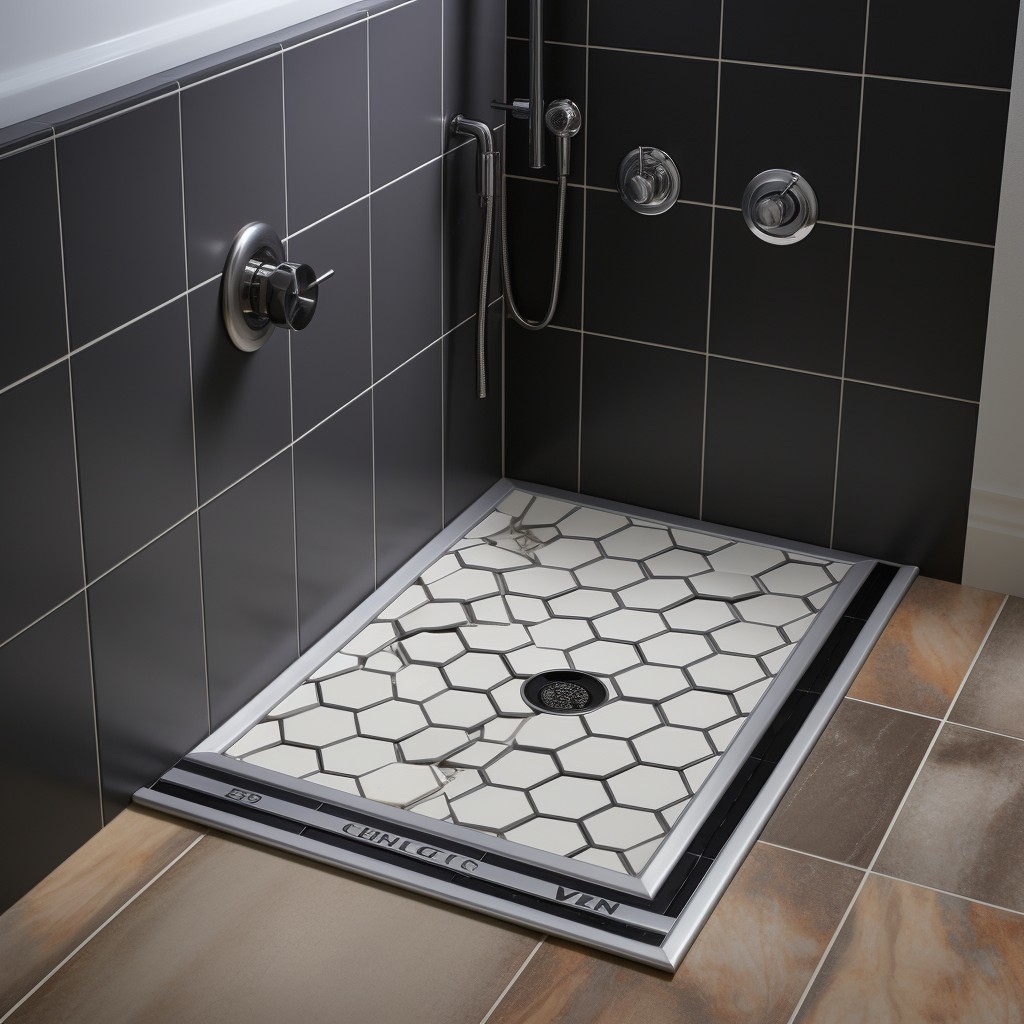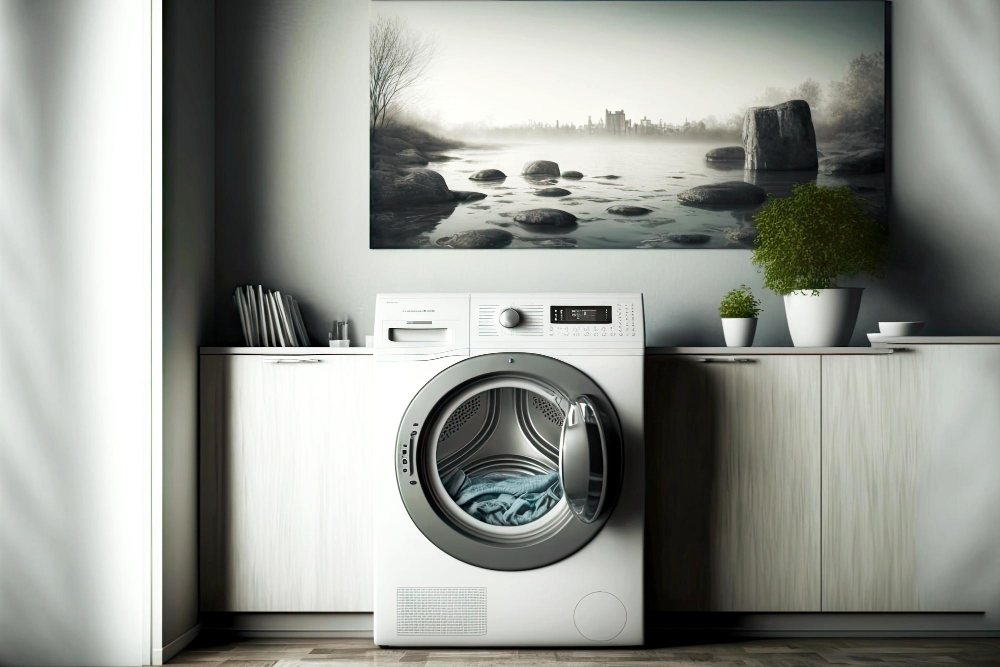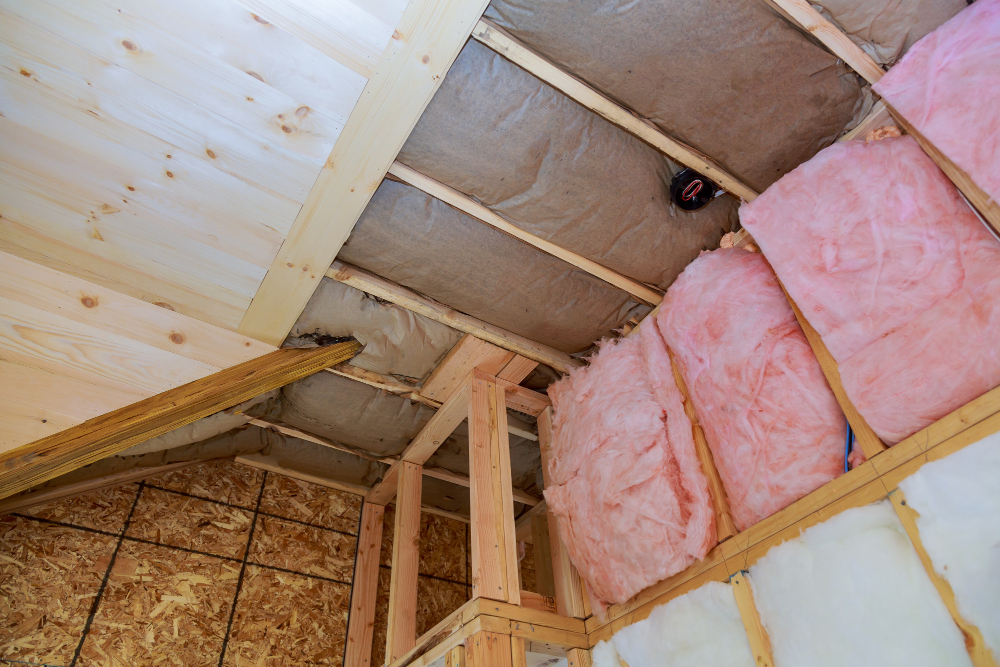Last updated on
Yes, a shower pan is necessary on a concrete floor to ensure proper drainage and prevent water damage.
Are you planning a bathroom renovation and wondering if you need a shower pan on a concrete floor? It’s a common question among homeowners, especially those who are trying to save money on their home improvement projects. The short answer is yes, but there are some important details to consider before making your final decision.
In this article, we’ll explore why shower pans are necessary for concrete floors, the different types of shower pans available, and how to choose the right one for your bathroom. So grab your coffee and let’s dive in!
Importance of Shower Pans
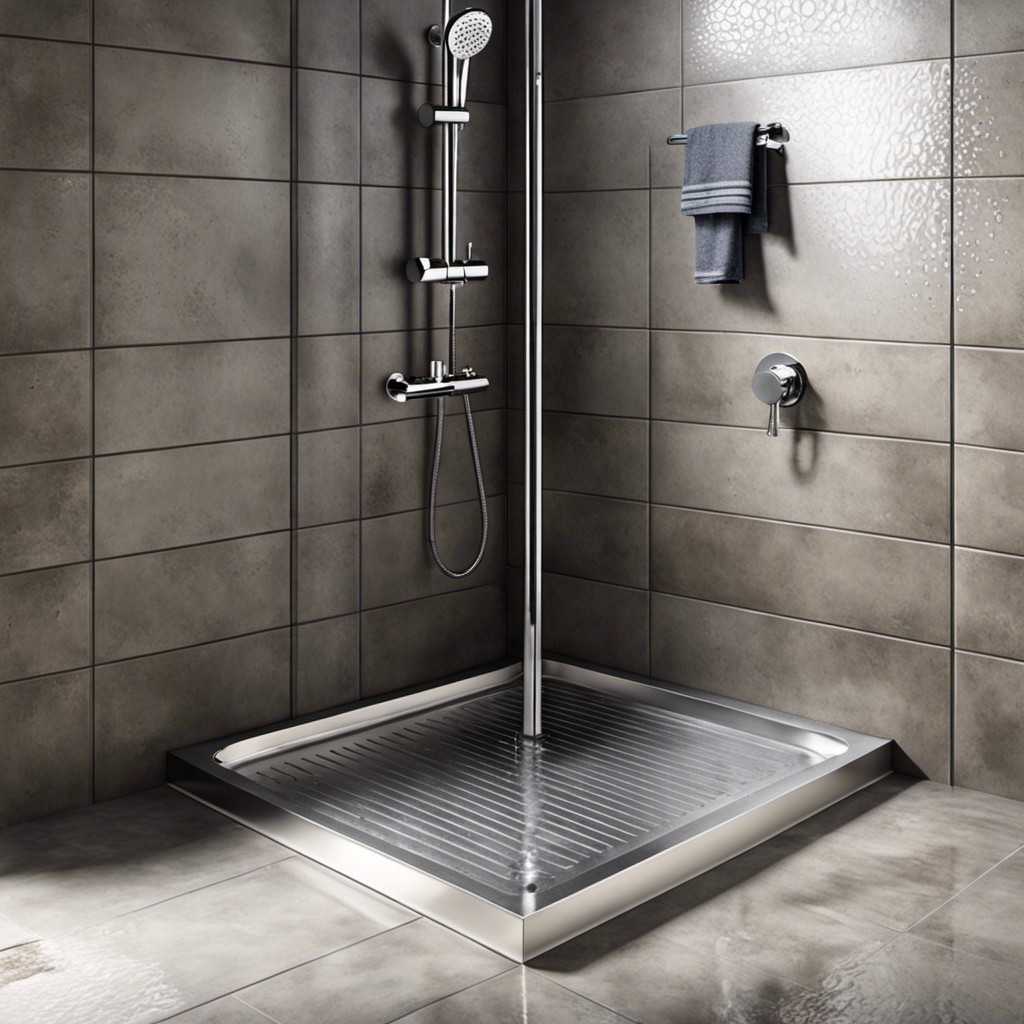
Shower pans are an essential component of any bathroom renovation project. They serve as a waterproof barrier between the shower floor and the subfloor, preventing water from seeping through and causing damage to your home’s structure.
Without a shower pan, water can penetrate into the concrete floor below, leading to mold growth, rotting wood or even structural damage.
A properly installed shower pan ensures that all water is directed towards the drain instead of pooling on your bathroom floor. This not only prevents slips and falls but also protects against long-term moisture-related issues such as mildew or mold growth.
In addition to their functional benefits, modern-day shower pans come in various styles and designs that add aesthetic value to your bathroom decor while providing practicality at its best. With so many options available today for different budgets – from basic fiberglass models to custom-tiled ones – there’s no excuse not to install one when renovating your bathroom.
Purpose of a Shower Pan
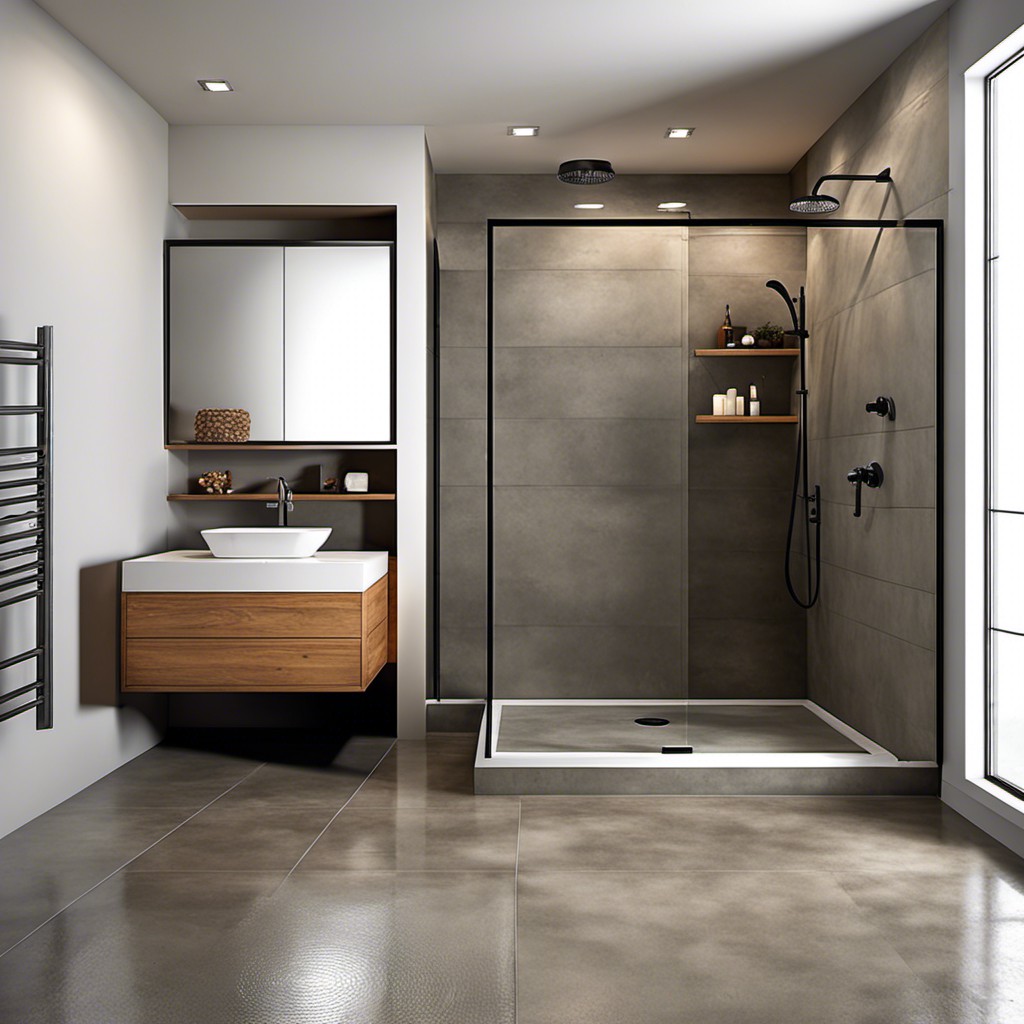
Without it, water can seep through the grout lines and cause damage to your home’s structure, including rotting wood or mold growth. A properly installed shower pan ensures that all water flows towards the drain instead of pooling on your bathroom floor.
Shower pans come in different materials such as fiberglass, acrylic, tile-ready pans made from polystyrene foam or PVC membrane liners. Each type has its own advantages and disadvantages depending on factors like cost, durability and ease of installation.
When choosing a shower pan for your concrete floor make sure you consider factors like size (to fit into space), slope (to ensure proper drainage) , style preference (for aesthetics) among others. Proper installation is also key to ensuring that it functions optimally over time without leaks which could lead to costly repairs down the line.
Concrete Floors and Showers
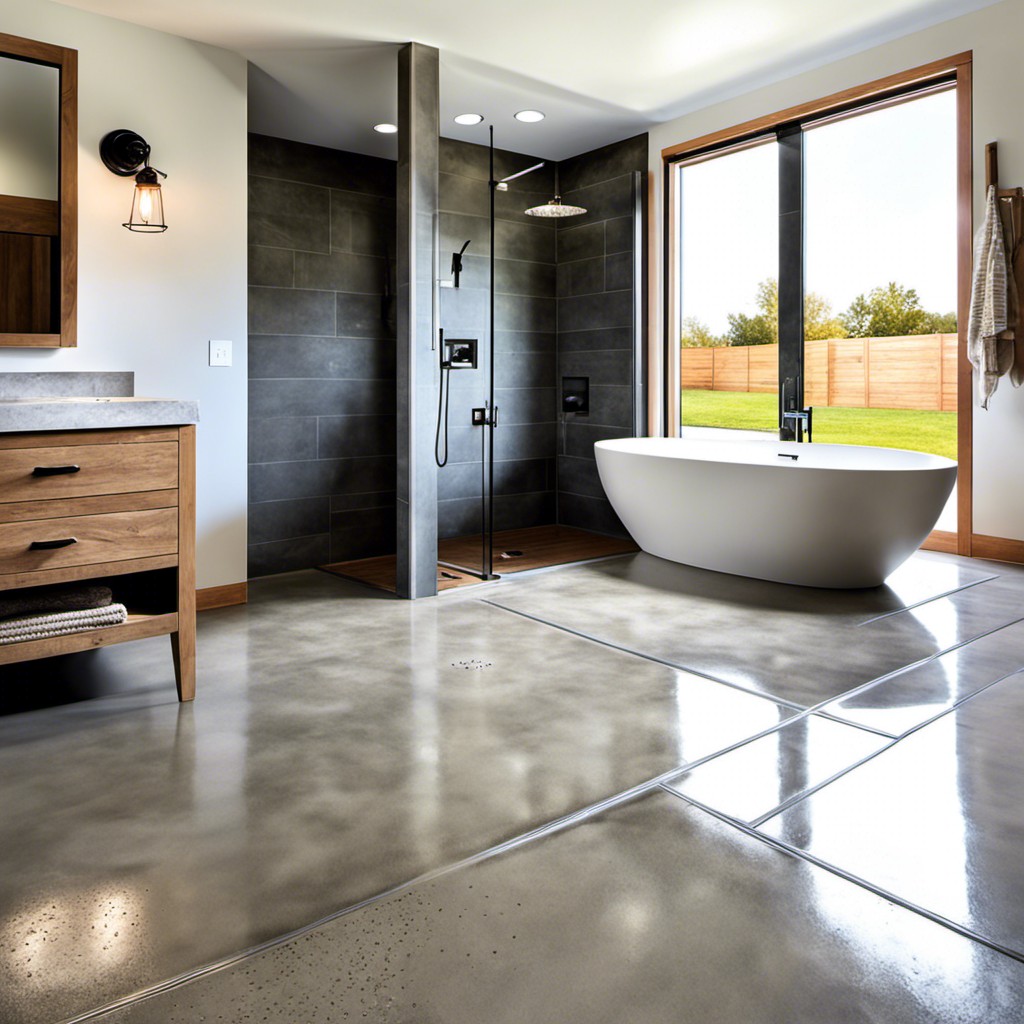
However, when it comes to installing a shower on a concrete floor, there are some important considerations. Concrete is porous and can absorb water if not properly sealed or waterproofed.
This can lead to mold growth, mildew buildup, and even structural damage over time.
Without the proper slope towards the drain in your shower area, water will pool on your concrete floor instead of draining away as intended. This creates an unsanitary environment that’s difficult to clean up after each use.
To avoid these issues altogether or fix them once they’ve occurred requires careful planning before installation begins.
Preparing a Concrete Floor for Shower
This will ensure that the shower pan is level and securely attached to the floor, preventing any leaks or water damage.
Firstly, you need to clean and remove any debris from your concrete floor. Use a broom or vacuum cleaner for this purpose.
Next step is checking if there are cracks in your concrete slab; if so, fill them with an appropriate filler material.
After cleaning and filling up all cracks in your concrete slab, you should check its levelness using a spirit level tool. If there are low spots on the surface of your flooring system that could cause water pooling issues later down during installation process then use self-leveling compound over those areas until they become even with surrounding surfaces.
Waterproofing Concrete Floors
Without proper waterproofing, water can seep through the concrete and cause damage to your home’s structure. There are several ways to waterproof a concrete floor for use in showers.
One option is using an epoxy coating that creates an impermeable barrier between the shower pan and the surrounding area. Another option is applying a liquid membrane that forms a seamless layer over the entire surface of the concrete floor.
It’s important to note that while these methods can be effective at preventing water damage, they require careful installation by professionals who have experience working with them.
In addition to using specialized coatings or membranes, you should also ensure proper drainage in your shower by sloping your shower pan towards its drain location. This will help prevent standing water from accumulating on your bathroom floor and causing further issues down the line.
Waterproofing a Concrete Shower Floor
Concrete is porous, which means it can absorb moisture and become a breeding ground for bacteria if not properly sealed. There are several ways to waterproof a concrete shower floor, including using waterproof membranes or coatings.
One option is to use a liquid-applied membrane that creates an impermeable barrier between the concrete and the tile or other flooring material. This type of membrane can be applied directly onto the surface of the concrete after it has been cleaned and prepped.
Another option is to use sheet membranes made from materials like PVC or rubber that are laid over the top of the prepared surface before tiling begins. These sheets provide excellent protection against water penetration but require careful installation by professionals.
Whichever method you choose, make sure you follow manufacturer instructions carefully for best results.
Shower Pan Functions
First and foremost, they provide a waterproof barrier between the shower floor and the subfloor or concrete slab. This prevents water from seeping into the underlying structure, which can cause damage over time.
In addition to preventing water damage, shower pans also help to direct water towards the drain. Most shower pans are designed with a slight slope that allows water to flow towards the center of the pan where it can be drained away efficiently.
Another function of shower pans is to provide stability for your tile or other flooring materials. Without a solid base like a properly installed shower pan provides, tiles may shift or crack over time due to moisture exposure.
Types of Shower Pans
The most common types include fiberglass, acrylic, tile-ready, and concrete.
Fiberglass shower pans are lightweight and easy to install. They come in a variety of sizes and shapes to fit any bathroom design.
However, they may not be as durable as other materials.
Acrylic shower pans are similar to fiberglass but offer better durability. They also come in various sizes and shapes but can be more expensive than their fiberglass counterparts.
Tile-ready shower pans allow you to customize your bathroom’s look by tiling over the pan surface seamlessly. These require professional installation for proper waterproofing.
Concrete is another option that offers excellent durability but requires skilled labor for installation due to its weightiness compared with other options mentioned above.
Choosing the Right Shower Pan
First and foremost, you need to make sure that the shower pan is compatible with your concrete floor. Some types of shower pans may require additional preparation or modifications before installation.
Another important factor is size and shape. Shower pans come in various sizes and shapes, so you’ll want to choose one that fits comfortably in your space while still providing enough room for comfortable use.
Material is also an essential consideration when selecting a shower pan. The most common materials used for making shower pans include acrylic, fiberglass, tile-ready options like Kerdi-board or Wedi-board systems as well as cast iron or solid surface materials such as Corian®.
Think about style and design elements when choosing a new shower pan – do you prefer sleek modern lines? Or perhaps something more traditional? Whatever style suits your taste best will help ensure that this investment lasts long-term without looking outdated too quickly!
Installing Shower Pans
If you’re handy with DIY projects, installing a shower pan can be a relatively easy task. However, if you’re not confident in your skills or don’t have experience working with plumbing and construction materials, it’s best to hire a professional.
Before starting the installation process, make sure that your concrete floor is clean and level. Any bumps or unevenness can cause problems later on when water doesn’t drain properly from the shower.
Next up is waterproofing – an essential step in preventing leaks and water damage. You’ll need to apply waterproof membrane over the entire surface of your concrete floor before placing down any tiles or other finishing materials.
When installing the actual shower pan itself onto a concrete floor there are two main methods: using mortar mix or adhesive sealant tape (also known as butyl tape). The former involves mixing cement-based mortar according to instructions provided by manufacturer then spreading this mixture evenly across bottom of tray before pressing firmly into place against wall studs; while latter requires applying strips around perimeter edges where they will adhere tightly once pressed together under weight pressure applied during installation process.
Installing a Shower Pan On Concrete
The process can be quite simple if you have some basic plumbing and construction skills. However, it’s important to note that improper installation can lead to leaks and water damage.
Firstly, ensure that the concrete floor is level and free from any debris or cracks. Next, measure the area where you want to install your shower pan carefully.
You’ll need these measurements when purchasing your shower pan.
Once you have purchased your desired type of shower pan (which we will discuss in detail later), follow the manufacturer’s instructions for installation carefully. Generally speaking, most pans require adhesive or mortar applied directly onto the concrete surface before placing them down.
Shower Drains and Slope
The slope ensures that water flows towards the drain and doesn’t pool in one area, which can lead to mold growth and other issues.
The standard slope for a shower floor is 1/4 inch per foot or 2% grade. This means that if your shower measures four feet across, there should be at least a one-inch difference in height between each side of the drain.
To achieve this slope, you may need to use self-leveling compound or mortar mix before installing your waterproof membrane and tile. It’s essential to ensure that your concrete subfloor is level before adding any additional materials.
Choosing an appropriate drain size for your bathroom needs will help prevent clogs from hair or soap buildup over time. A larger diameter pipe will allow more water flow than smaller ones; therefore it’s crucial when selecting drains with sufficient capacity based on usage frequency (e.g., daily vs occasional).
Shower Pan Alternatives
One option is a pre-fabricated fiberglass or acrylic shower base. These bases come in various sizes and shapes and can be installed directly onto your concrete floor without any additional waterproofing needed.
Another alternative is to use a liquid membrane system that creates a seamless, waterproof barrier over your entire bathroom floor. This type of system requires professional installation but can provide excellent protection against leaks and moisture buildup.
However, it’s important to note that these alternatives may not offer the same level of durability as traditional shower pans. They may also require more maintenance over time to prevent cracks or other types of damage.
Ultimately, choosing the right solution for your bathroom will depend on several factors such as budget, personal preference, and overall design goals.
Pros and Cons of Shower Pans
Let’s take a closer look at some of them.
- Pros:
- Prevents water from seeping into the subfloor
- Provides a smooth surface for tile installation
- Easy to clean and maintain
- Available in various materials, sizes, shapes, and colors to match any bathroom decor
- Cons:
- Can be expensive depending on the material used (e.g., fiberglass vs. custom-made)
- Installation can be tricky if not done correctly by an experienced professional.
- May require additional steps such as waterproofing or slope adjustment
- Some types may crack or leak over time
While there are some downsides to using shower pans on concrete floors; their benefits outweigh these drawbacks.
Pros of a Shower Pan On Concrete
First and foremost, using a shower pan ensures proper drainage and prevents water damage to your bathroom floor. Without it, water can seep into cracks in the concrete or between tiles and cause mold growth or even structural damage over time.
Another advantage is that shower pans come in various materials such as acrylic, fiberglass, tile-ready options among others which makes them versatile for different design preferences. They also provide an easy-to-clean surface compared to tiled showers where grout lines can be difficult to maintain.
Shower pans are also relatively easy to install when done by professionals with experience installing them correctly; this means you don’t have to worry about any complicated installation processes if you hire someone who knows what they’re doing.
Cons of a Shower Pan On Concrete
One of the main disadvantages is that they can be expensive to install. Depending on the type and size of your shower pan, you may need to hire a professional plumber or contractor which can add up quickly.
Another potential drawback is that shower pans require regular maintenance and cleaning. If not properly maintained, they can become clogged with hair and soap scum which could lead to water damage or mold growth over time.
If you choose an improper slope for your shower pan installation it could cause standing water in certain areas leading again towards mold growth as well as slippery surfaces causing accidents while taking showers.
Maintenance and Repairs
Regular cleaning is essential for preventing mold and mildew buildup, which can cause unpleasant odors and damage the shower pan over time. You should also inspect the drain regularly to make sure there are no clogs or leaks.
If you do notice any issues with your shower pan, such as cracks or leaks, it’s important to address them promptly before they become more serious problems. Depending on the severity of the issue, repairs may be possible without having to replace the entire shower pan.
In some cases where a repair isn’t feasible or cost-effective due to extensive damage or age of installation; replacing an old worn-out Shower Pan with new one is recommended by experts in order avoid water leakage that could lead into structural damages in future.
Maintenance Tips for Shower Pans
Regular cleaning and maintenance can prevent mold, mildew, and other issues that can damage your shower pan over time. Here are some tips for maintaining your shower pan:
1. Clean the surface regularly: Use a non-abrasive cleaner or soap scum remover to clean the surface of the shower pan at least once a week.
2. Avoid harsh chemicals: Harsh chemicals like bleach or ammonia can damage the finish of your shower pan over time.
3. Check for leaks: Inspect around and under the edges of your shower base regularly to check if there are any signs of water leakage.
4. Keep drains clear: Make sure that hair and debris do not accumulate in drain pipes as this may cause clogging which could lead to water overflow onto floors causing damages.
5.Repair cracks immediately : If you notice any cracks in your fiberglass or acrylic pans repair them immediately with an epoxy kit designed specifically for repairing these materials.
Common Shower Pan Issues
One of the most common problems is a leaky shower pan. This occurs when the sealant around the edges of the pan deteriorates or cracks, allowing water to seep through and cause damage to your subfloor and walls.
Another issue that homeowners may encounter is a clogged drain in their shower pan. Hair, soap scum, and other debris can accumulate in your drain over time and cause it to become blocked.
This not only affects drainage but also creates an unpleasant odor.
Lastly, some people may experience cracking or warping of their shower pans due to age or improper installation techniques.
It’s important to address these issues as soon as possible before they lead to more significant problems down the road.
Cost of Shower Pan Installation
The price of installation can vary depending on several factors such as the size and type of shower pan, labor costs in your area, and any additional materials needed for waterproofing or repairs.
On average, the cost of installing a new shower pan ranges from $300 to $1,500. This includes both materials and labor costs.
However, if you need extensive repairs or modifications done before installation can begin (such as leveling the concrete floor), this could increase the overall cost.
It’s important not to skimp on quality when it comes to choosing your shower pan material. While fiberglass pans may be cheaper upfront than tile or stone options they are less durable over time which means more frequent replacements that will add up in terms of maintenance expenses.
Ultimately though investing in high-quality products like these will save money down-the-line by reducing repair needs while also providing better functionality for daily use!
FAQ
Can you just have a concrete shower floor?
Yes, you can have a concrete shower floor, as it is an adequate base for materials like stone, tile, or mosaic tile, provided there is a proper membrane between the concrete and any vulnerable surrounding material.
Can I tile directly to concrete for shower?
A: Yes, you can tile directly to concrete for a shower, but ensure there is no moisture coming up from the slab by testing it with a polyurethane plastic sheet.
Do all showers need a shower pan?
Yes, all showers need a shower pan because it provides a waterproof surface and protects the floor and subfloor from potential leaks.
Can you put shower tray on the concrete floor?
Yes, you can put a shower tray on a concrete floor, as long as the surface is completely level and you cut away enough space for the waste using the waste hole as a template.
What are the advantages and disadvantages of installing a concrete shower floor without a shower pan?
Advantages and disadvantages of installing a concrete shower floor without a shower pan include increased customization and lower costs as benefits, while drawbacks consist of potential water leakage and challenging installation.
How can a proper drainage system be ensured in a concrete shower floor without a shower pan?
To ensure a proper drainage system in a concrete shower floor without a shower pan, one needs to implement a gradual slope towards the drain, waterproof the floor, and install a functional drain assembly.
Are there specific materials or sealants recommended for waterproofing a concrete shower floor without a shower pan?
One recommended material for waterproofing a concrete shower floor without a shower pan is a liquid waterproofing membrane, such as RedGard, Hydro Ban, or Mapei AquaDefense.
Recap
Liked this article? Here's what you can read next:

